November 2025
The global pigments market size was reached at USD 30.12 billion in 2024 and is expected to be worth around USD 50.72 billion by 2034, growing at a compound annual growth rate (CAGR) of 5.35% over the forecast period 2025 to 2034. The rapid urbanization and growing demand across end-user industries like plastics, digital printing, & paints & coatings drive the market growth.
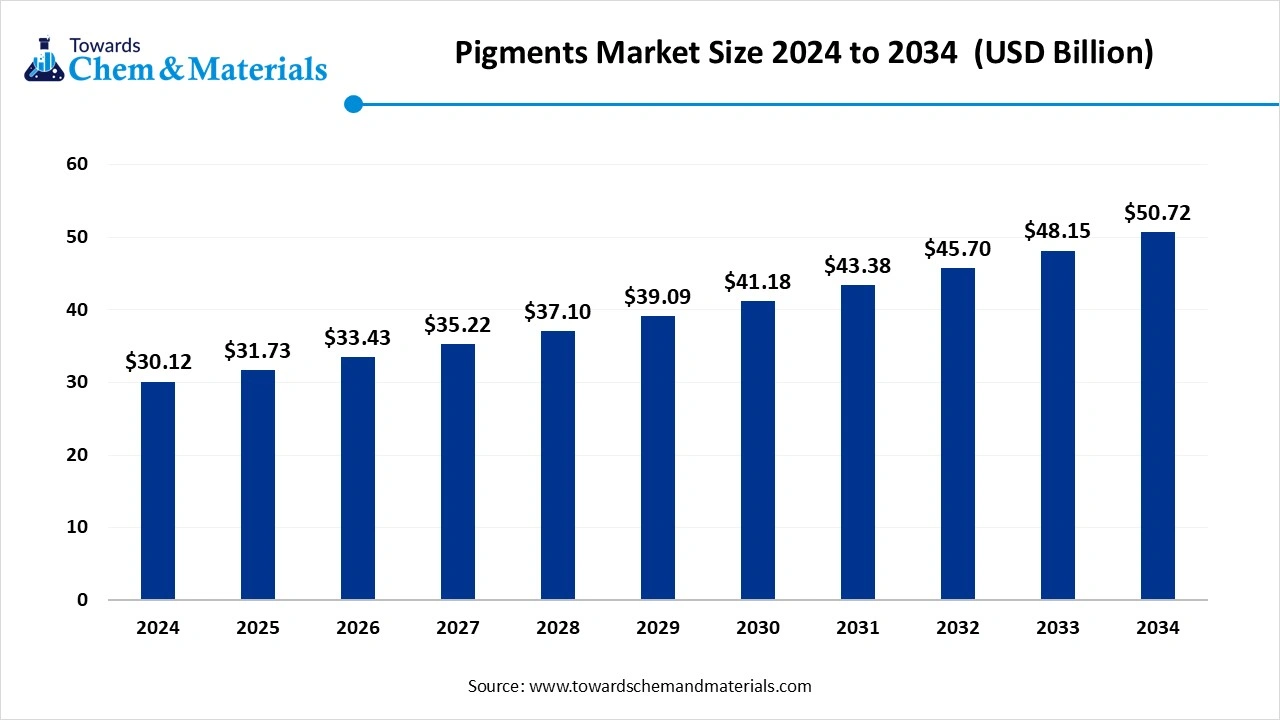
Pigments are a substance that alters the colors and visual appearance of materials like plastics, inks, paints, and many more. They are insoluble in water and change colors by absorbing certain wavelengths of light. Pigments are divided into types: organic and inorganic. Organic pigments are produced naturally through simple processes, and inorganic pigments are made up of metals & mineral salts.
Pigments are widely used to improve aesthetics, visual appeal, and enhance functionality like environmental elements resistance, UV protection, and durability. The ongoing technological advancements in pigments like customized pigments, improvements in pigment performance, and innovation in digital printing help market growth. The growing demand across applications like plastics, ceramics, cosmetics, coatings, textiles, food, and printing contributes to the growth of the pigments market.
Who are the Leading Exporters of Prepared Pigments in 2023? 4/6
| Country | Export |
| Spain | $1.01B |
| China | $636M |
| Japan | $493M |
The rapid urbanization and growing construction activities in various regions increase demand for pigments for various applications. The increasing development of infrastructure projects like bridges, roads, buildings, and many more increases demand for pigments for paints & coatings applications. The growing industrial structures, architectural coatings, and road markings increase demand for pigments for weather resistance, color, and opacity.
The growth in commercial and residential construction increases demand for pigments for exterior & interior applications. The need for cement and concrete in construction activities requires pigments for creating colored and decorative applications. The focus on sustainable construction practices increases demand for pigments like CICPs. The growing construction activities are a key driver for the growth of the pigments market.
| Report Attribute | Details |
| Market Size in 2025 | USD 31.73 Billion |
| Expected Size by 2034 | USD 50.72 Billion |
| Growth Rate from 2025 to 2034 | CAGR 5.35% |
| Base Year of Estimation | 2024 |
| Forecast Period | 2025 - 2034 |
| Dominant Region | Asia Pacific |
| Segment Covered | By Type, By Application, By Source, By Form, By End-User Industry, By Color Type, By Region |
| Key Companies Profiled | BASF SE, The Dow Chemical Company, Clariant AG, AkzoNobel N.V., Cabot Corporation, LANXESS AG, DuPont, PPG Industries Inc., Arkema S.A., Huntsman Corporation, Tronox Holdings, Sudarshan Chemical Industries Ltd., Kraton Polymers, Heubach GmbH, Imerys, Ferro Corporation, Evonik Industries AG, Bayer AG, Merck Group, Vibfast Pigments Pvt. Ltd. |
Growing Expansion of the Automotive Industry Surges Demand for Pigments
The growing expansion of the automotive industry in various regions increases demand for pigments for numerous applications. The increasing production of vehicles fuels demand for pigments for coating applications. The focus on enhancing the aesthetic appeal of vehicles and durability fuels demand for pigments. The increasing customization of vehicles and innovation in vehicles increases demand for sustainable and eco-friendly pigments.
The stricter environmental regulations for vehicle emissions and sustainability increase demand for white inorganic pigments. The rise in electric vehicles fuels demand for pigments for aesthetics and lightweight. The growing advancements in vehicle production increase demand for high-quality pigments. The growing expansion of the automotive industry creates an opportunity for the growth of the pigments market.
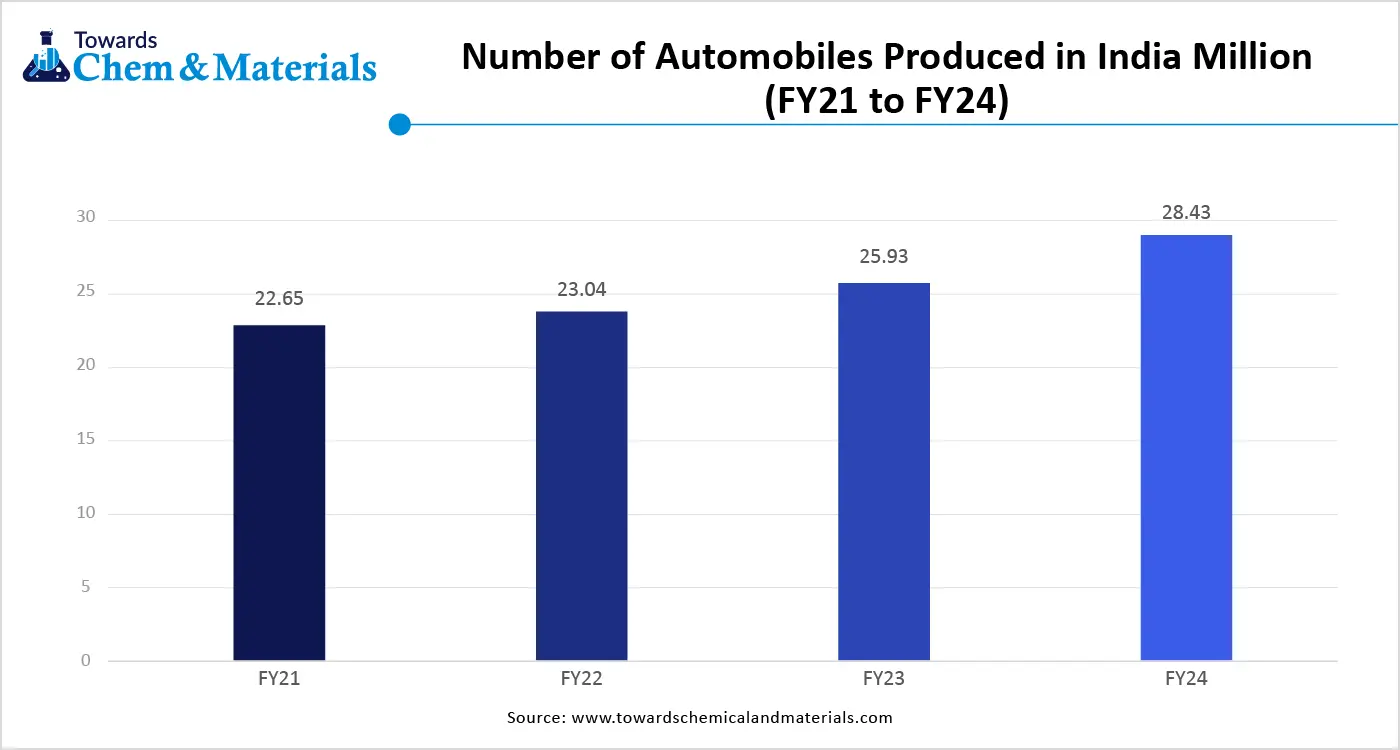
Fluctuating Raw Materials Prices Restrain Pigments Market Growth
Despite several benefits of the pigments in various industries, the fluctuating prices of raw materials restrict the market growth. Factors like changing demand, supply chain disruptions, and geopolitical events are responsible for fluctuating raw materials prices. Raw materials are essential for the production of pigments, and the fluctuating cost of raw materials directly affects the market.
The supply chain disruptions due to trade wars and political instability increase the cost of raw materials. The stricter environmental regulations and natural disasters like earthquakes & floods increase the cost of raw materials. The fluctuating raw materials prices hamper the growth of the pigments market.
How Asia Pacific Dominated the Pigments Market?
The Asia Pacific pigments market size was estimated at USD 13.55 billion in 2024 and is anticipated to reach USD 22.85 billion by 2034, growing at a CAGR of 5.36% from 2025 to 2034. Asia Pacific dominated the pigments market in 2024.
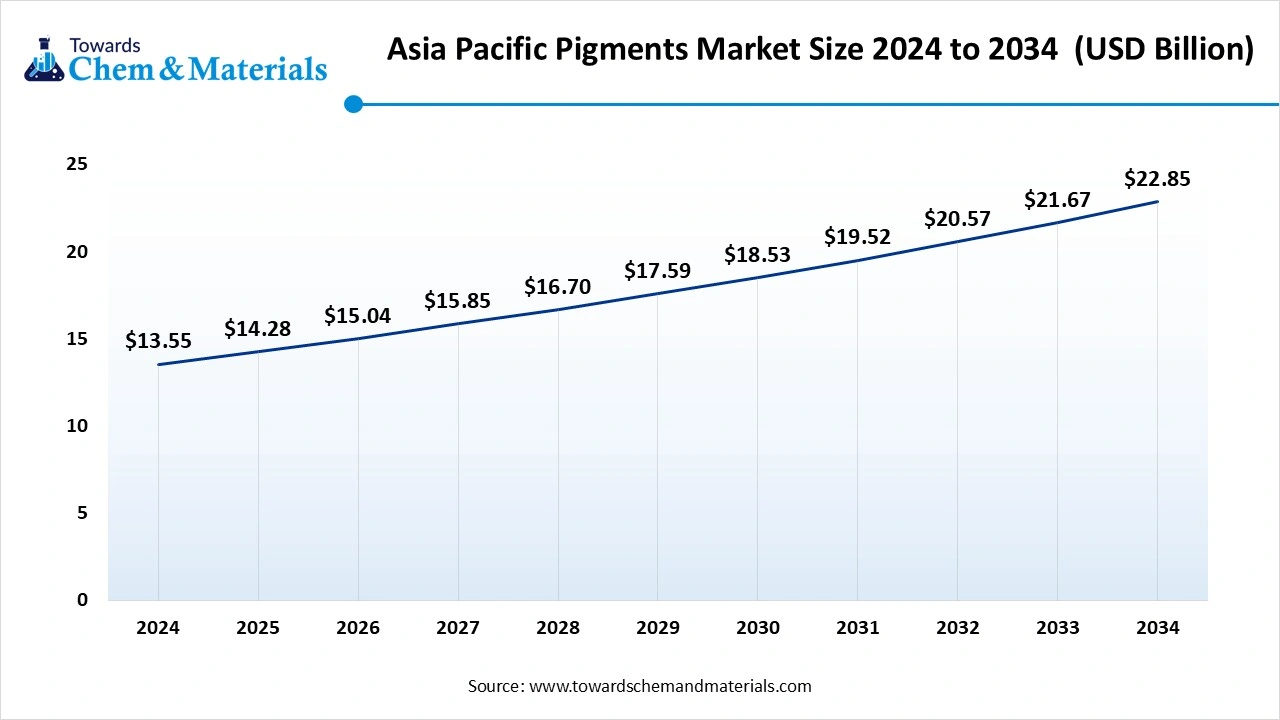
The rapid urbanization and growing infrastructure development increase demand for pigments. The lower manufacturing cost of pigments and a strong manufacturing base help the market growth. The supportive government policies in countries like India & China increase the manufacturing of pigments. The increasing disposable incomes and growing spending on consumer goods products increase demand for pigments. The rising demand across end-user industries like shipbuilding, coatings, and automotive manufacturing supports the drives the overall market growth.
China Pigments Market Trends
China is a major contributor to the pigments market. The strong presence of the industrial base and increasing demand for pigments in various industries help the market. The strong government support for the chemical industry and initiatives like Made in China increase the production of pigments. The growing production of fluorescent pigments and rising domestic demand in industries like plastics, printing inks, coatings, paints, and textiles support the market growth.
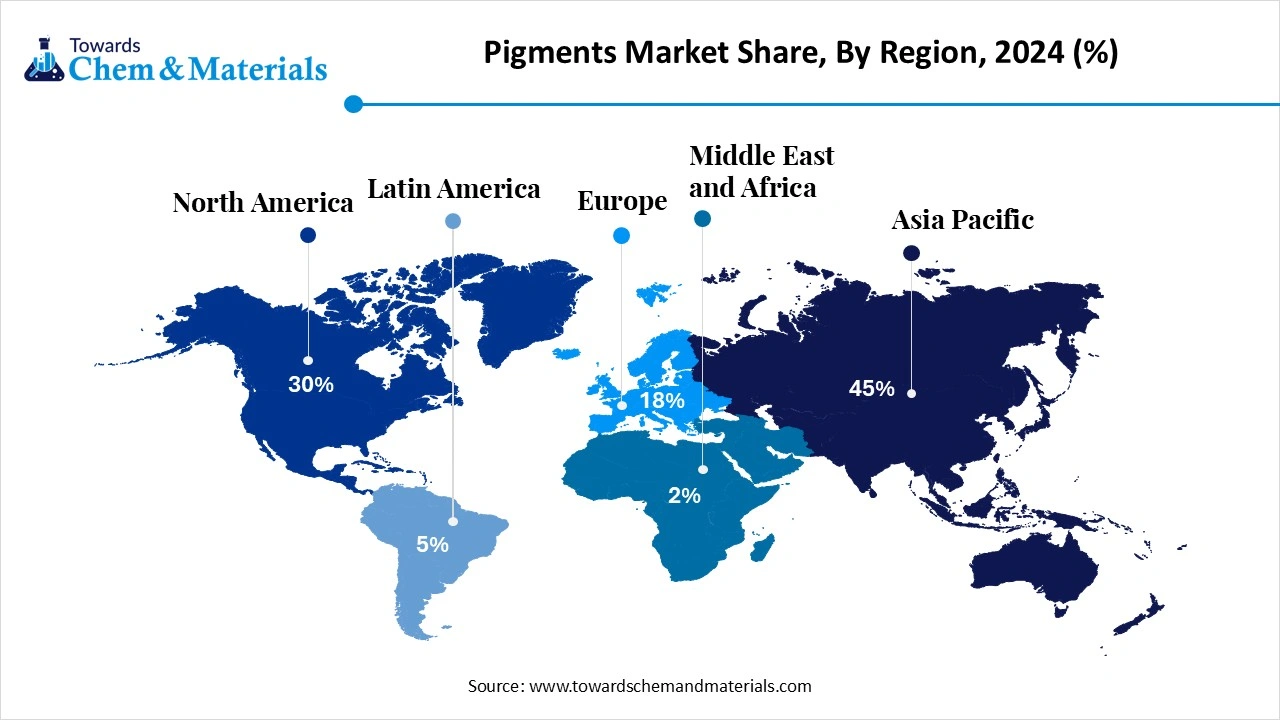
Why North America Experiences the Fastest Growth in the Pigments Market?
North America experiences the fastest growth in the market during the forecast period. The growing development of residential buildings and infrastructure increases demand for pigments for concrete, paints, and coatings. The increasing production of vehicles and the growing automotive industry increases demand for pigments. The focus on sustainability and stringent regulations about VOC emissions increases demand for eco-friendly pigments. The easy access to raw materials increases the production of pigments. The growing demand across end-user industries like construction, textile, consumer goods, and packaging drives the market growth.
United States Pigments Market Trends
The United States is a key contributor to the pigments market. The well-established industrial base and growing manufacturing of various chemicals increase the production of pigments. The ongoing R&D in pigments and a focus on manufacturing high-performance pigments help the market growth. The stricter environmental regulations and growing end-user industries like architectural, automotive, and aerospace increase demand for pigments. The presence of major players like Sun Chemical, BASF, and Clariant supports the overall growth of the market.
Why did the Inorganic Pigments Segment Dominate the Pigments Market?
The inorganic pigments segment dominated the pigments market in 2024. The growth in industrial paints, architectural coatings, and automotive finishes increases demand for inorganic pigments like iron oxide & titanium oxide. The growing construction industry increases demand for inorganic pigments used in building materials, concrete, & mortar. Inorganic pigments offer excellent resistance to UV degradation and withstand high temperatures. It provides good chemical resistance and excellent hiding power. Inorganic pigments require a lower production cost and provide a high production yield. The growing demand across applications like consumer goods, packaging, and automotive components drives the market growth.
The organic pigments segment is the fastest-growing in the market during the forecast period. The stringent environmental regulations and increasing demand for eco-friendly products fuel the adoption of organic pigments. The growing demand for exterior and interior coatings in automotive applications increases the demand for organic pigments, helping the market growth. The rapid urbanization and growing infrastructure development increase demand for organic pigments for construction materials, paints, and coatings. Organic pigments provide good dispersion, color strength, and tinting strength. The growing food & beverage and the expansion of the consumer goods industry increase demand for organic pigments, supporting the overall market growth.
How Paints & Coatings Segment Held the Largest Share in the Pigments Market?
The paints & coatings segment held the largest revenue share in the market in 2024. The growing infrastructure development and construction activities increase demand for paints & coatings. The increasing demand for a wide range of shades & colors of paints & coatings requires pigments. The focus on visual appeal and growing production of electric vehicles increases demand for paints & coatings. The growing demand across various sectors like automotive, architectural, and industrial drives the overall market growth.
The plastics segment experiences the fastest growth in the market during the forecast period. The rapid growth in the packaging industry and increasing production of exterior & interior components of vehicles increases demand for plastics. The growing demand for colored plastics across various applications helps the market growth. The growing demand across end-user industries like consumer goods, packaging, and automotive supports the overall growth of the market.
Why did the Synthetic Pigments Segment Dominate the Pigments Market?
The synthetic pigments segment dominated the market in 2024. The growing demand for high-performance pigments increases the production of synthetic pigments with properties like excellent lightfastness, heat resistance, and chemical resistance. Synthetic pigment produces a wide range of saturated colors and offers excellent resistance to fading. It is widely used for large-scale industrial applications and produces consistent quality. The growing adoption in various industries like plastics, printing inks, coatings, textiles, and cosmetics drives the market growth.
The natural pigments segment is the fastest-growing in the market during the forecast period. The growing consumer awareness and increasing environmental concerns increase demand for natural pigments. The growing food & beverage industry increases demand for natural pigments to offer appealing visuals. The expansion of the cosmetics industry fuels demand for natural pigments for the manufacturing of products like moisturizers & lipsticks. The focus on creating sustainable & unique colorations in textiles requires natural pigments. The growing demand for paints & coatings increases adoption of organic paints, supporting the overall market growth.
How Powdered Segment Held the Largest Share in the Pigments Market?
The powdered segment held the largest revenue share in the pigments market in 2024. The focus on ease of handling and increasing demand for affordable pigments fuels the demand for powdered pigments. The need for easy dispersion in a wide range of media, like coatings, paints, and plastics, increases the demand for powdered coatings, helping the market growth. Powdered pigments have higher hiding power and color intensity. The focus on customization and growing demand for powder pigments across industries like decorative coatings, plastics, automotive coatings, and many more drives the market growth.
The liquid segment experiences the fastest growth in the market during the forecast period. The growth in textile applications like textile printing & dyeing increases demand for liquid pigments. The increasing demand for coloring various plastic products increases the adoption of liquid pigments. The focus on reducing extensive milling & grinding and simplifying formulation methods increases demand for liquid pigments. They offer consistent colors and better suspension properties. The growing demand for color filters, cosmetics, and digital printing inks increases the adoption of liquid pigments, supporting the overall market growth.
Which End-User Industry Dominated the Pigments Market?
The automotive segment dominated the market in 2024. The focus of the automotive industry is to sustain conditions like temperature fluctuations, UV radiation, and chemical increases the demand for pigments. The increasing demand for creating aesthetic appeal and finishes in vehicles fuels the adoption of pigments. The growing demand for various pigments in the automotive industry, like complex inorganic color pigments and white inorganic pigments, helps the market growth. The stricter environmental regulations in the automotive industry and the rise in electric vehicles increase demand for pigments, driving the overall market growth.
The consumer goods segment is the fastest-growing in the market during the forecast period. The focus on creating attractive consumer goods products increases demand for pigments. The increasing creation of sustainable products fuels demand for eco-friendly pigments. The increasing disposable incomes and growing spending on consumer goods help the market growth. The growing demand for various consumer goods like plastic products, cosmetics, home care products, and other products supports the market growth.
How White Pigments Segment Held the Largest Share in the Pigments Market?
The white pigments segment held the largest revenue share in the market in 2024. The growth in construction activities increases demand for white pigments for paints & coatings applications. The increasing need for aesthetically appealing and durable coatings in the automotive sector fuels demand for white pigments. The rising spending on consumer goods, home decoration, and personal care products increases the adoption of white pigments. They offer high opacity, UV resistance, and longevity. The presence of key players like KRONOS Worldwide Inc., The Chemours Company, BASF, and Tronox Limited drives the market growth.
The blue pigments segment experiences the fastest growth in the pigments market during the forecast period. The increasing focus on car paints and coatings fuels the adoption of blue pigments. The growing infrastructure development and growth in construction activities increase demand for blue pigments for paints & coating applications. The growing electronics industry increases demand for blue pigments for technologies like microLEDs & OLEDs. The increasing production of cosmetics products like mascaras and eyeshadows increases demand for ultramarine blue pigments. The growing demand across end-user industries like construction, cosmetics, automotive, and electronics supports the market growth.
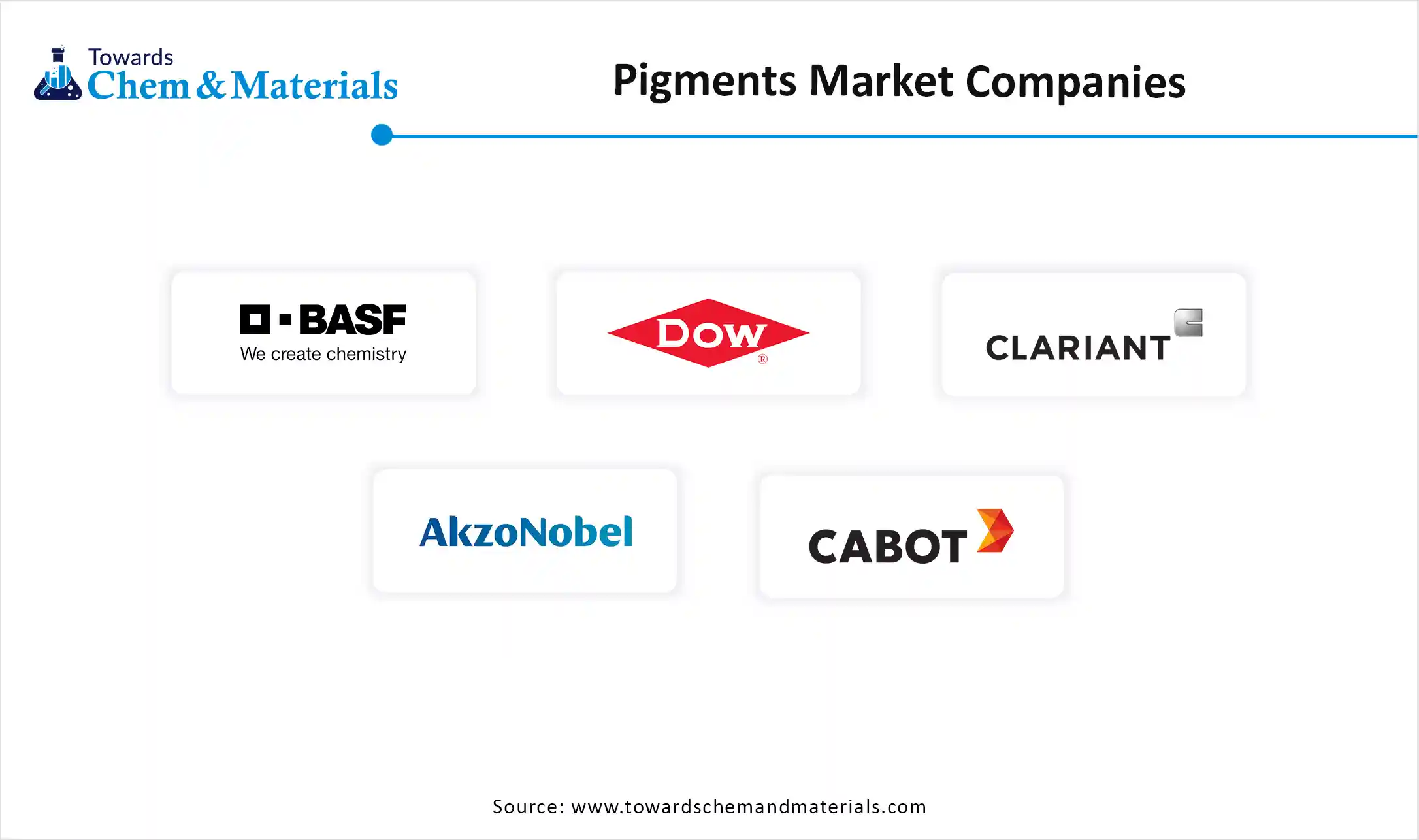
By Type
By Application
By Source
By Form
By End-User Industry
By Color Type
By Region
The global polyethylene wax market size was valued at USD 2.35 billion in 2024. The market is projected to grow from USD 2.45 billion in 2025 to USD 3...
November 2025
November 2025
November 2025
November 2025